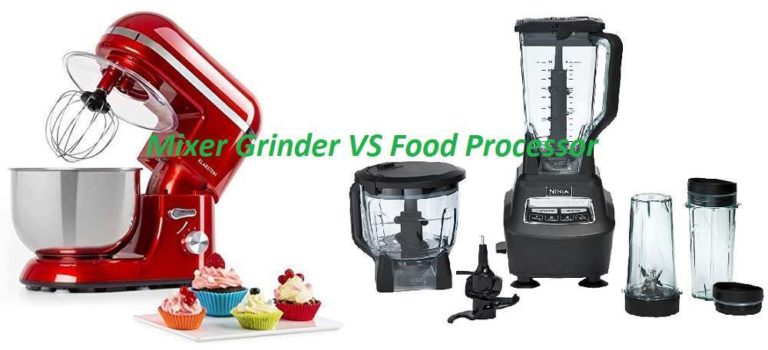

What is the Best Milk For Frothing? Not all milk is suitable for frothing. Best non dairy milk for coffee.
Let’s start by stating that the very best coffee includes raw milk, as it goes through a lighter pasteurization process and does not affect its organoleptic high quality.
The whole fresh milk has a high-fat content, about 3.5-4%, which gives a very extreme flavor to the cappuccino.
For a good whipping, milk with high protein content, a minimum of 3.2-3.5%, is recommended, aiming to offer the cappuccino a really dense creaminess.
As a matter of fact, the steam-absorbing healthy protein gets into the milk during the whipping stage, while the fat gathers and also makes the cappuccino creamy.
What Is The Best Milk For Frothing? Things To Know
What is the Best Milk For Frothing?
And the best milk is recommended for that is.
Whole Milk: It’s widely available and guarantees you the smoothest foam. Perfectly balanced with sugar, fat, protein, and water.
Almond milk: Gives you a rich, creamy layer of foam
Oat milk: Helps you to have a smooth, creamy, sweet layer
Milk without cream: Suitable for those who post fast and give you a smoother layer of foam.
There are many people the milk foaming technique used for all kinds of coffee drinks is the same.
In fact, it is not. The requirements for the finished milk foam of the coffees will vary.
In general, milk will have three main components that are fat, protein-protein, and carbohydrates.
In it, the protein content is what makes the milk fizzy. It also means that, depending on the type of milk with different protein content, can affect the ability of the foam to maintain the foam.
And because the milk’s properties change a lot because the protein breaks down after it is heated, you can only whip once.
This will limit the type of drink you drink from being affected by the changing sweetness of the milk.
The amazing stiff foam on the cup of coffee that we usually get inspired with doesn’t happen by accident.
It is the result of the skills of your coffee maker and the amazing quality of the milk used. And we bet you that nothing can make you crave coffee more than the froth of the heavy creamed milk.
Usually, people think that what is the factor that differentiates homemade coffee from the coffee at a restaurant or coffee shop?
You might get surprised to know, but 90% is due to the quality of milk, and the remaining figure is your effort.
Due to this reason, we have organized this article, and we will be going to cover multiple aspects of best coffee milk to make you well-aware about everything related to it.
Every farm produces milk with different fat and protein content.
However, a milk’s accurate characteristics all rely upon what the dairy cows eat, the conditions they are kept in, and how the milk is treated after it’s been gathered.
There’s a science behind which sorts of milk are best for baristas. For instance, one study shows that Jersey cows produce the best milk for finishing.
This is on the grounds that their milk has elevated levels of protein, sugar, and spread fat.
Accordingly, Jersey milk has gotten valued among distinctive cheddar and frozen yogurt creators.
Regardless of this, ease organizations will, in general, maintain a strategic distance from them since they produce a lower volume of milk.
It’s not just about the variety, either: all in all, unfenced cultivating and unhomogenized milk are likewise connected with better quality.
Milk has three principal parts: proteins, sugars, and fat. Proteins make up around 3.3% of milk, with skimmed and semi-skimmed milk having a more noteworthy proportion of them to starches and fat.
Accordingly, their protein substance can thusly be separated into two principal types, casein, and serum.
Milk temperature has an adverse effect
Lactose is the sugar part of milk. There are two types of lactose present in a harmony combination because of mutarotation, α-lactose, and β-lactose.
β-lactose is the more steady structure, and furthermore, the better type of the two.
When you steam milk past a temperature of 100 °C, this causes browning.
As the response proceeds, the beneficial items in the milk can go through a lack of hydration and oxidation responses.
Subsequently, this can cause a deficiency of dietary benefits and unappealing flavor mixes in the milk.
The last fundamental constituent of milk is milkfat.
This exists as globules in the milk. Over 98% of it is fatty acids of different kinds and specifically incorporates immersed, monounsaturated, and polyunsaturated fatty acids.
Like protein, these fat atoms can settle the arrangement of froth by encompassing the air from the steam wand and capturing it in an air pocket.
The higher fat substance will prompt more steady froth at temperatures underneath room temperature, while kinds of milk with lower fat substance are better at settling froth at higher temperatures.
This could be because of the diminished surface strain of the fat along the air bubble surface, itself an aftereffect of an expansion in fat rate.
Warming up these fat particles doesn’t simply influence the froth surface.
At the point when warmed or steamed, the fatty acids additionally take an interest in synthetic responses, for example, oxidation responses.
Thus, this can offer ascent to an unwanted flavor. The lesson of the story is that every segment of milk adds to its capacity to froth and froth, and steaming impacts every one of these segments.
This implies that if we need great quality milk, we have to get some information about it.
We should realize which variety of cows the milk comes from, what those cows are being taken care of, if they’re unfenced, and that’s only the tip of the iceberg.
Steam milk for amazing coffee
How about we view what really happens when we steam milk. This cycle includes presenting boiling water fume into cold milk until it arrives at the ideal temperature for a completely steamed latte.
The cycle sounds sufficiently straightforward – yet there are a large group of factors that should be thought of. Thus, different kinds of milk require different measures of steaming time.
Furthermore, it’s imperative to get this right: too high a temperature can prompt burning. Furthermore, it eliminates microbes and denatures catalysts, causing turning sour.
It’s not simply steaming time that is influenced, by the same token. Since different kinds of milk have different atomic organizations, they likewise require different steaming temperatures.
Types of milk suitable for frothing
Whether it’s about the best milk for cappuccino foam or about the best milk for espresso, we always have the following categories that we look for the amazing results:
Soy milk
Soy milk is a standout amongst other non-dairy milk for frothing, and it has been utilized as a milk elective by both expert baristas and standard coffee consumers for quite a while.
What makes it famous is the way that other than being more moderate, it is likewise one of the most generally available non-dairy milk in many spots.
With soy milk, you will get a smoother and creamier surface, which is the thing that many milk-based coffee sweethearts appear to like.
Additionally, the taste is generally unbiased, which implies it won’t overpower your coffee.
Thus you will even now get the wealth and strength on your blend. What’s more, numerous coffee sweethearts will likewise adore that it won’t leave any significantly delayed flavor impression.
Since soy milk has a decent stretch, it will be ideal for framing milk froth, and in possession of an accomplished barista, this milk can give a froth that is as acceptable if worse than dairy milk.
In any case, soy milk likewise has something reasonable of disadvantages like the way that a few sorts will in general sour when they come into contact with the corrosiveness in the coffee and the high temperatures.
Almond milk
Almond is another profoundly famous non-dairy milk affectionately utilized for frothing when making different milk-based drinks.
However, it is as yet not as mainstream as soy milk. What numerous individuals love most about it is that it delivers a decent rich froth, and it is outstanding amongst other milk for lattes as it can make some pleasant workmanship.
Since almond milk will, in general, have a higher fat substance than numerous other non-dairy milk types, it will froth up well practically like dairy milk.
However, to get that ideal froth, you will at present need to rehearse as it isn’t unreasonably simple.
Additionally, almond milk will be accessible in improved and unsweetened adaptations and in a few flavors to guarantee it obliges a wide range of coffee sweethearts.
Furthermore, similar to soy milk, almond milk can coagulate in your coffee due to its corrosiveness and high temperatures.
Thus you ought to guarantee you don’t pour freezing almond milk on your hot coffee.
Coconut milk
There are some milk types like coconut milk that consistently appear to make everything taste better; thus, even before you froth them for your coffee, you can practically be sure they will give it a stunning flavor.
While it probably won’t be as famous for frothing as the two non-dairy milk above, coconut milk is prized for the more outlandish flavor and thicker surface, which is exactly what some cappuccino and latte sweethearts are continually searching for in their milk.
Adding it to your coffee will likewise give it a pleasant tropical bend, and on the grounds that it has a thick consistency, it won’t water down or weaken the blend.
Whole milk
There is no uncertainty that whole milk is a standout amongst other milk for frothing, scorn it, or love it.
Indeed, even with the numerous dairy and non-dairy options out there, nothing will give you a similar froth quality, surface, and authentic taste that you would get from whole milk.
Whole milk will have the ideal equilibrium of proteins, sugar, fats, and water to guarantee you generally get the best milk froth.
This milk can undoubtedly give you a smooth microfoam, and you don’t need to be an expert barista to accomplish it as it is the simplest to froth even without a modern milk frother.
Even better, whole milk will barely ever be excessively velvety for your preferred on the grounds that when steamed and frothed, it makes a smooth and mitigating froth with barely enough rich consistency.
Skimmed milk
If you need that authentic taste and richness in your lattes and cappuccinos yet don’t care for whole milk, skimmed milk is the following best thing.
Skimmed milk will contain around 3.4% protein, which is significantly more than the what you get in whole milk, yet it will have less fat and starch.
The difference in protein content likewise implies you will get a different sort of froth. Not at all like whole milk that will give thicker and creamier froth, skimmed milk will give you foamier froth with generally bigger air bubbles.
The nonappearance of high measures of fat in skimmed milk is likewise one reason why you get light and vaporous froth.
The Best Milk for Frothing?
Which milk to use?
If you are a follower of a particular sort of milk, prior to buying, it is vital to make sure that the model was chosen permits the milking of the milk we normally drink. Some kinds of foam can only assure thick and thick foam if you use the milk inside.
the use of whole milk is suggested most of all for making whipped milk, while if you just require to heat it, you can use any of these beverages.
On the other hand, a lot more premium coffee coffees permit you to foam the milk utilizing skim or semi-skim milk, soy milk, and almond milk.
We can conclude the topic by saying that milk frothing is an amazing technique and a cherry on top for coffee lovers. However, the perfect froth can only be achieved with the right type of milk used.
Posts related to resources of Silk Road Restaurant:
Source: silkroadrestaurant.org
Category: BLOG

Hi, I’m Iolanda I am a mother of two and know how to whip up satisfying dishes for friends and family in a seemingly effortless way. The blog goal is reader-oriented, So We are always looking for the newest information about the best products on the market to offer product reviews and tutorials to assist users.Have Fun on The Website






